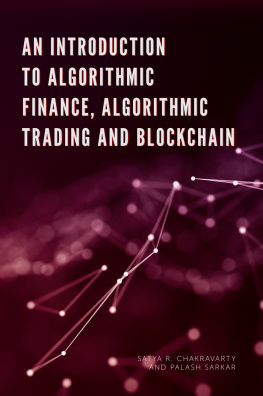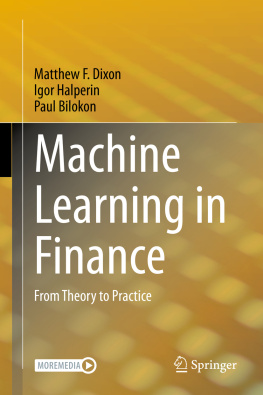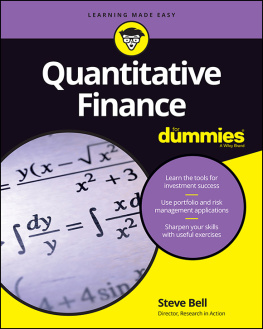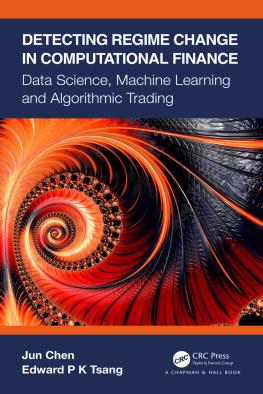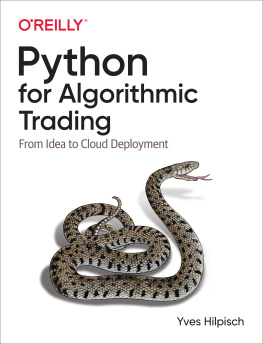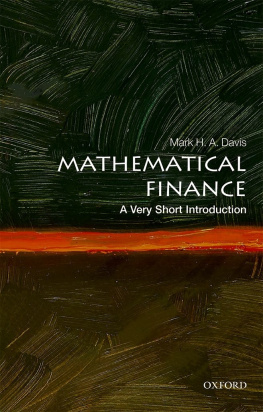Chapter 1
Background and Preliminaries
The financial industry is enormously important to state, national and world economies. This industry relies extensively on mathematical modeling of underlying instruments. Computational techniques become helpful in designing related algorithms that enable us to understand how markets function and also lend themselves to highly relevant research problems.
To understand the application of a specific computational technique to the particular financial instrument, it becomes indispensable to have a clear perception of the underlying theory. However, because of vastness of the theoretical literature, some selection becomes necessary.
We choose the highly attractive field of option pricing, a core task of computational finance and risk analysis. An option is a contract that gives the holder the right, but not an obligation, to buy or sell an asset at a pre-agreed price, the strike price, on or before the date of expiry, the maturity date. The broad field of option pricing is quite ambitious and diverse enough to call for a wide range of computational tools. Confining mostly to option pricing enables us to have a more coherent and comprehensive textbook, to a large extent, and avoids being distracted away from computational issues. An option is a standard example of a derivative, a financial instrument whose value relies on one or more assets that are usually referred to as underlying assets. Generally, it takes the form of a contract to buy or sell an asset or item like commodity, property, etc. at the strike price, on or before the expiration date. Other examples of a derivative include bonds, futures contracts, forward contracts and swaps. (For detailed discussions see, among others, Jarrow and Turnbull, 2000.) The financial market in which derivatives are traded may be designated as the derivatives market. We assume a perfect market in the sense that there are no costs of transactions, no restrictions on short sales and existence of a common borrowing and lending rate. Short selling is a business tactic that involves borrowing an asset and selling it immediately, repurchasing the asset (hopefully at a lower price) and returning it to the lender to close the process. (Chapters 11 and 15 of this monograph provide further discussions along this line.)
A derivatives market can be partitioned into two subgroups, one in which derivatives are traded in an organised exchange market where maintenance of market price and all transparencies are provided. An example of an exchange-traded derivative is an option. Under a futures contract, an exchange-traded agreement, the buyer is accountable to buy the underlying asset at a pre-arranged price at a future date. The seller makes the commitment to hand over the asset at the settled price and date. Another market-traded derivative is a bond, a debt security issued by government and corporate sectors to raise funds for various purposes including expansion of one or more sectors, infrastructural improvements and payment of existing debts. A financial market in which trading of bonds takes place is known as a bond or credit or debt market. A trading in the other market is of over-the-counter (OTC) type. This type of off exchange trading takes place directly between the traders without supervision of an exchange. An example of an OTC derivative is a forward contract under which two parties make an agreement to buy or sell an asset at a designated date on a promised price. A swap is an off exchange-traded derivative under which a financial instrument is exchanged between the parties concerned at a pre-specified time.
A highly significant component of the derivatives market is risk. Risks can be of various types such as asset risk, interest rate risk, foreign exchange risk, credit risk, commodity risk and so on. While asset risk arises from volatility in asset prices, interest rate risk refers to the chance that variations in rate of interest may negatively affect an investment. Likewise, foreign exchange risk emerges from fluctuations in exchange rate between two different currencies. On the other hand, credit risk indicates the possibility of a lender's loss of principal and interest if a borrower fails to make committed payments. Commodity risk is related to the apprehension of loss that may arise because of oscillation in a commodity price in the future. But risks may also bring about unexpected benefit. Investors wish to make risky investments with the expectation of making profits in the future. Given that there can be alternative notions of risk, use of appropriate tools for the purpose of risk management becomes essential. Different forms of derivatives become useful in this situation. More precisely, derivatives are financial instruments for administering financial risks. They transfer different forms of financial risks to derivatives market. They are financial securities for hedging or bordering risks in the sense of protecting or at least reducing risks. The basic principle underlying asset pricing is the existence of non-arbitrage. According to an arbitrage opportunity, a trader can take advantage of price imbalance to extract rapid profit without any risk. Consequently, the non-arbitrage assumption means the rule of a single price. (Further discussions on arbitrage are available in Chapters 11 and 15 of this monograph.)
Since in the first part of the monograph we will be mainly concerned with options, a brief, rigorous and authoritative discussion on options and related phenomena is presented in Chapters 36. For the sake of completeness, an abridged analysis of valuation of cash flows and fixed income securities is presented in Chapter 2.
Given that any investment in a risky asset includes the chance of a loss, it is quite likely that an investor will look into the problem of risk management in a portfolio, a composition of assets held by the investor. The investor often may be confronted with the necessity of ordering distributions of random returns on various financial assets or combinations of them on the basis of his preferences, represented by a von NeumannMorgenstern utility function. This issue has been addressed in several pioneering contributions to the literature. A quite general approach to the resolution of the problem is the rule of stochastic dominance that enables us to order the distributions of random rates of return on assets for large classes of utility functions. No specific knowledge about the form of utility function is necessary. A concise illustrative introduction to the concept of stochastic dominance is presented in Chapter 7.
Chapter 2
Valuation of Cash Flows and Fixed Income Securities: An Abridged Analysis
2.1 Introduction
In order to judge profitability of an investment, say, a firm's investment in a project, it becomes necessary to compare present values of cash inflows (benefits) and outflows (costs). The net present value (NPV) criterion that looks at the difference between present values of benefits and costs is a standard tool for this type of analysis. Alternatives to this are benefitcost ratio and internal rate of return (IRR), a discount rate that makes NPV equal to zero. In this chapter, we present a brief discussion on these criteria. A brief discussion on bond as a particular type of constant earning security is also presented.
2.2 Net Present Value
When a firm has decided to start a project, this decision will have some important implications on the firm's financial position for one or more periods. The firm has to obtain an overall indicator that will judge whether it will become better off or worse off when the project has been undertaken.
The NPV method, which is employed to determine current values of all inflows and outflows associated with an investment, is an appropriate tool for this purpose. The risk-free interest rate

